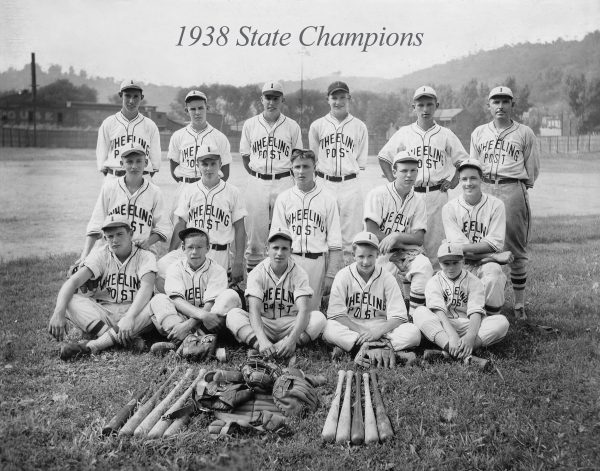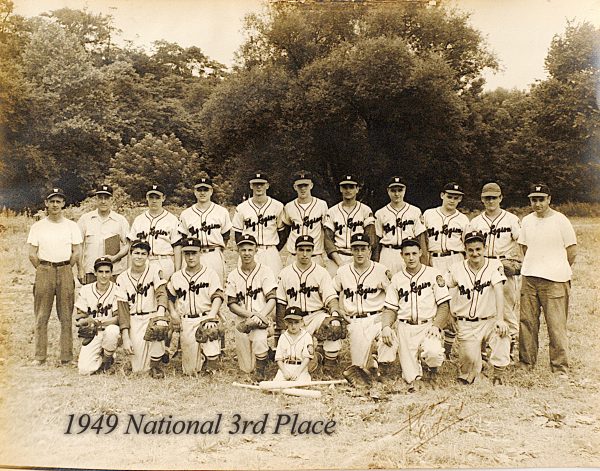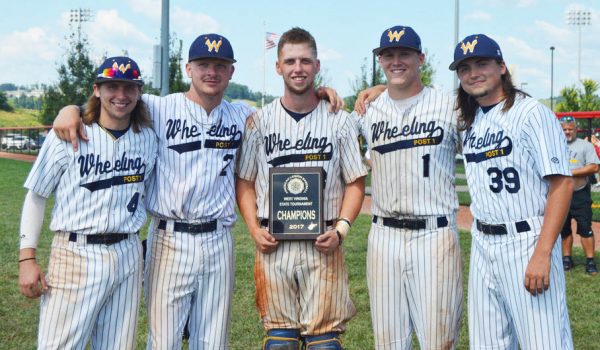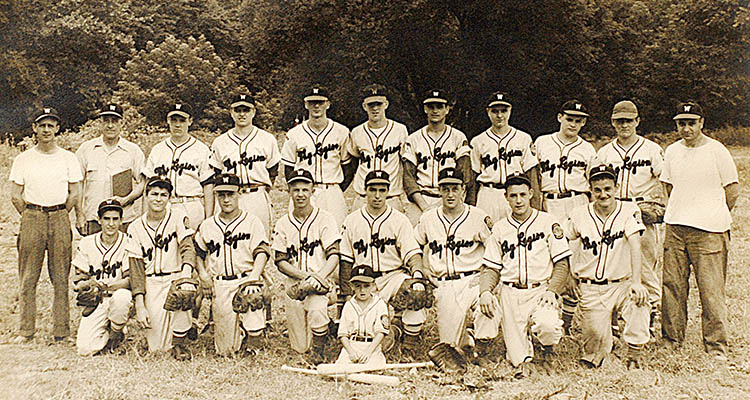Bridging the gap between these boys and men were Wheeling’s American Legion Post 1 Baseball Team, fielding the finest 15- to 17-year-old players from across the city.
At the national level, American Legion Baseball began in 1925 in South Dakota, where the state American Legion Department proposed “Legion Junior Baseball” as a way for the Legion to support America’s youth, particularly in the realm of athletics. The first national tournament was held the following year and included teams from 16 states.
Wheeling’s first verified American Legion Baseball team was in the 1938 season. Coached by Walter Ray “Lefty” Hamilton, Post 1 won their first of 17 West Virginia state tournaments that year. Just a month after the championship game in July, the American Legion Athletic Club was founded on Aug. 8, 1938, to support and ensure funding for the team. Among its first major projects was to secure a playing field for the Post 1 team.

The American Legion Athletic Club found that home field in the Fulton neighborhood of town, at the eponymous former home of the Wheeling Stogies, roughly where the PPG Paints building stands today. According to current American Legion Athletic Club President Donald Tennant Jr., the club held an annual carnival fair at the field to help raise money for the team.
“It was a neat way to fund the team,” said Tennant. “From the reports that I have seen in the newspaper, the carnival was a big get-together for the entire city.”
While in most years, the funds raised were used for uniforms, equipment, field upkeep and some travel expenses, the 1949 season likely saw team costs increase significantly as the Post 1 team sailed through the area, state, regional and sectional championships. The team of 15 teen ballplayers battled their way to the national championship in Omaha, Nebraska, as one of the top four teams among over 6,000 nationwide. This is particularly impressive when considering that the young men of Wheeling were joined in Omaha by teams from Atlanta, Cincinnati and Oakland, much larger cities reportedly fielding much larger boys on the diamond. In comparison to their opponents, the Post 1 players seemed so small that the Omaha press labeled them, “The Wheeling Midgets.” Even back home, Wheeling’s pitcher Tommy Manion was known as “Little Tommy.”
For Little Tommy and his teammates, Omaha’s brand-new Rosenblatt Stadium must have seemed like a palatial playing field in comparison to the aging Fulton Field.
“There was a news report that an opposing player was awarded a home run at Fulton Field because the ball was lost in the outfield weeds,” Tennant said. “It may not have had an outfield fence. One member of the American Legion Athletic Club complained that the team would go through two dozen balls a game from so many going into the creek.”
Despite their small stature and rugged home field, the 1949 Wheeling Post 1 team held their own against their metropolitan opponents and returned from the national tournament with a third-place trophy in tow. Still today, it is the only time a West Virginia team has captured the sectional championship and advanced to the national tournament.

Though the 1949 run was Post 1’s only national tournament appearance, the team would go on to set a national record 21 years later. Wheeling Post 1 played a whopping 21 innings in a single game against the Pittsburgh’s “Little Pirates,” eventually besting the boys in black and gold by a single run with a score of 3-2. With only two pitchers: Steve Wojcik held the mound for 12 innings without giving up a single run before turning it over to Bruce Hatcher, Wheeling played what is regarded as the longest game in the history of American Legion Baseball. The full schedule for the evening would have run even longer.
“The game was the first part of a doubleheader,” Tennant said. “Well after 21 innings, Post 1 Coach ‘Lard’ Vitale yelled over to the Pittsburgh team, ‘We’ll start the next one in 15,’ but the Little Pirates were already getting on their bus to go home. They had had enough.”
With 17 state championships, Wheeling Post 1 has brought home more first-place trophies from the tournament than any other West Virginia Team. Most recently, the team won three consecutive state tournaments between 2015 and 2017 under former Head Coach Mark Delbrugge.

With this storied tradition behind them, the young men of American Legion Post 1 opened their Beast of the East campaign at their home No. 5 Field at the I-470 complex in Wheeling on Thursday, July 4. So celebrate our nation’s independence this weekend in one of the most American ways possible: watching a hometown baseball team play on a warm summer day, the same way Friendly City crowds have for over 80 years.
• Nick Musgrave is a self-described history geek living in Wheeling, W.Va. He is a graduate of Hastings College in Hastings, Nebraska, where he earned his bachelor’s degrees in history and political science. When not writing for Weelunk or uncovering cool stories about the past, he can often be found reading in his hammock or trying to brew the perfect cup of coffee.


